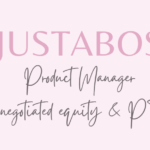I get it, the phrase budget made me want to gag for the longest time too. The term budget is kind of like the word diet, and a lot of people assume that in order for it to be successful, it must be restrictive. Fad diets or no-spend months are not my thing because it promotes a restrictive attitude (and I think I only lasted like a week…oops). If you have the mindset that it is a lifestyle change of building good money habits over time rather than a quick fix, you’ll likely be able to stick to it.
You are more than just a number and your budget needs to be fluid just as your life changes. I promise you it doesn’t have to be as painful and restrictive as you think it needs to be. In this article, I will walk you through step by step how to build a budget that you will actually want to stick to.
Creating a budget without knowing what you are spending on is kind of like doing it blind. I often get the question, “What percentage of my paycheck should I put towards savings?” or “Is spending $xx too much on rent?” and while you may think it is a simple question it can vary greatly from person to person and is based on so many factors. Before you focus on the exact percentage you should put towards each category, it is important to understand your personal spending habits and what is actually going into the numbers.
Start with learning your habits
Before you get started, think about how you are actually spending your money. Try to spend a few months simply tracking your spending as detailed as you can to better understand your habits.
As you are tracking your expenses pay attention to a few things:
- What percentage of my money is going to certain areas and categories?
- How much of your money is going towards impulse purchases?
- Is your credit card tempting you to spend on items you normally wouldn’t be?
- What are you spending on convenience?
- How much are you REALLY spending on subscriptions?
You can view your expenses in an automated app (like Mint or YNAB) or do it manually in a spreadsheet or even paper, but personally I have found that it sticks the hardest when you have to manually type or write out every time you spend money. Try out different strategies and see what works best for you.
After you do this, even for just a few months, it will really open your eyes on where your money is going. Before I did this, I had no idea how much I was truly spending and it helped me pinpoint areas I can improve on and understand areas I still wanted to spend on. In this process, I have found there were many areas of my spending that didn’t seem like much here or there, but really added up when I totaled my numbers.
Areas of spending that may creep up on you:
- Subscription services: do we really need 4 different streaming services..these don’t seem like much at only $5 or $10 a month, but can easily creep up to $100s a month
- Free trials: This isn’t necessarily spending but too many times we forget to actually cancel these.
- Food Delivery: paying $25 dollars for an $8 chipotle meal…OUCH
- Restaurants: all in moderation is fine, but you do know that you have a kitchen, right?!
- Clothing shopping: idk who needs to hear this, but you don’t need a brand new outfit every time you step outside
- Going out
- Ride sharing
For me, food delivery was a BIG hit to my budget. After working a long day, the absolute last thing I wanted to do was cook. $20 here and $15 there didn’t seem like much in the scheme of things, but when I took a hard look at all of my spending it added up to over $1,000 (just for my laziness). Spending a premium for convenience can definitely be worth it in some circumstances, but in some instances it is just not worth it. After you review your spending habits, you can see how that stacks up against your financial priorities.

Understand what your financial goals are
Everyone will have different financial priorities and that is completely fine. This is really why personal finance is personal. You can think of your financial priorities or goals in the shorter and long term.
In the short term, think about what you want to spend on now and in the next few years or so.
Some examples of short term priorities may be:
- Building up your emergency fund
- Paying down credit cards or other high interest debt
- Saving up for a travel fund
- Saving up for holiday gifts
- Etc.
Once you understand what you want to prioritize, see how much you want to put towards each goal. Let’s say you want to add $2,000 to your emergency fund and add $1,000 in your travel fund over 1 year, you should allocate $250/month towards those goals in your monthly budget.
In the long term, think about what you want to spend on in the future or 10 or so years out from now. This will mainly be things like investing for the long term like retirement or saving for large purchases like a home.
Some examples of long term priorities may be:
- Investing in your 401(k)
- Investing in your Roth IRA
- Opening a 529 to save for your child’s education
- Saving for a down payment
- Investing in a brokerage account
- Opening an HSA to save & invest for future health expenses
Let’s say you have a goal to max out your Roth IRA for the year ($6,000 max if you are under the age of 50). You should account for $500/month out of your budget to go towards your Roth IRA.
Try to embed these into your budget every month even a little bit can go a long way.
A good relationship with money is more than just saving as much as you can for your goals but also feeling okay with spending your money too. Many fail to create a budget that works by not accounting for spending on activities or products that make you happy.
Leaving money aside to spend on things you enjoy
You may really love trying new restaurants with your friends or splurging on self care or going on vacations, it will be different for everyone. The idea is to still have money to spend on things that make you happy. It doesn’t have to be a ton of your budget but make sure you give yourself at least a little bit to spend on things you enjoy.
“Fun money” is usually the first thing to go when cutting back, but I try to avoid this as much as possible. When you get rid of this buffer, that’s when a budget will feel restrictive. It is important to save and invest for your future, but you can’t give up everything in the process.
In addition to budgeting for fun, logistically I try to automate paying myself first. I have found the easier I make it for myself to save and invest for my future, the more likely I am to actually do it.
Automate what you can
My mindset is if I have never seen the money it’s kind of like it was never there. Once I understand my spending habits and priorities, I see what I can do to automate paying my bills and saving for future me. The less work I have to do to pay myself first, the more likely I am to actually do it.
To avoid any late fees and in some instances even get a discount, try to put your bills on autopay if you can to automate. On the flip side, try to automate your savings & investments. I like to treat my month savings and investments as another “bill” to ensure I do so every month.
To automate your savings, there are 2 simple ways you can do this:
- Automatic deduction from your paycheck: You can actually split your paycheck from your employer between multiple bank accounts. This way you can automatically have money going directly into a separate high yield savings account
- Automatic transfer into your savings account: Set a transfer to be made by a certain date every month. For example, you can set that on the 15th of every month to have $200 deducted from your checking account.
To automate your investments, there are a few strategies you can try:
- Start with your 401(k): With your 401(k), you pick your investments ahead of time, so it is fully automated. All you need to do is select the percentage deducted from your pay
- Automated deposit into a roboadvisor: Similar to your savings account, you can schedule an automated deposit for a select date.
- Automated deposit into your brokerage account: You can schedule an automated deposit into your brokerage account, but the main caveat is you’ll need to select your investments after it’s deposited
Aside from automating where you can, make sure you are continuing to update your budget as you go.
Update your Budget as you go
Life changes and that’s okay. Let’s be real, I don’t think anyone expected the past 15 months or so to go the way that it did. We all spent the past year or so avoiding social gatherings so it’s only normal to want to make up for lost time and be social again. As life changes, so should your budget.
If you skipped your hair appointments because who was even going to see you this year, but now you want to spend more on self care, go for it. However, make sure you do so in moderation. Try to review your expenses to see if your habits have changed or it still makes sense.
To wrap up...
If you want to set a budget that will actually work for you, you will have to do a few things. First, you will need to start tracking your expenses to truly understand your spending habits. Afterwards, try to prioritize your financial goals for the short term and long term. Next, see what you enjoy and try to incorporate spending on products and experiences that make you happy. Finally, find opportunities to automate where you can and continue to update your budget as your life and priorities change.






